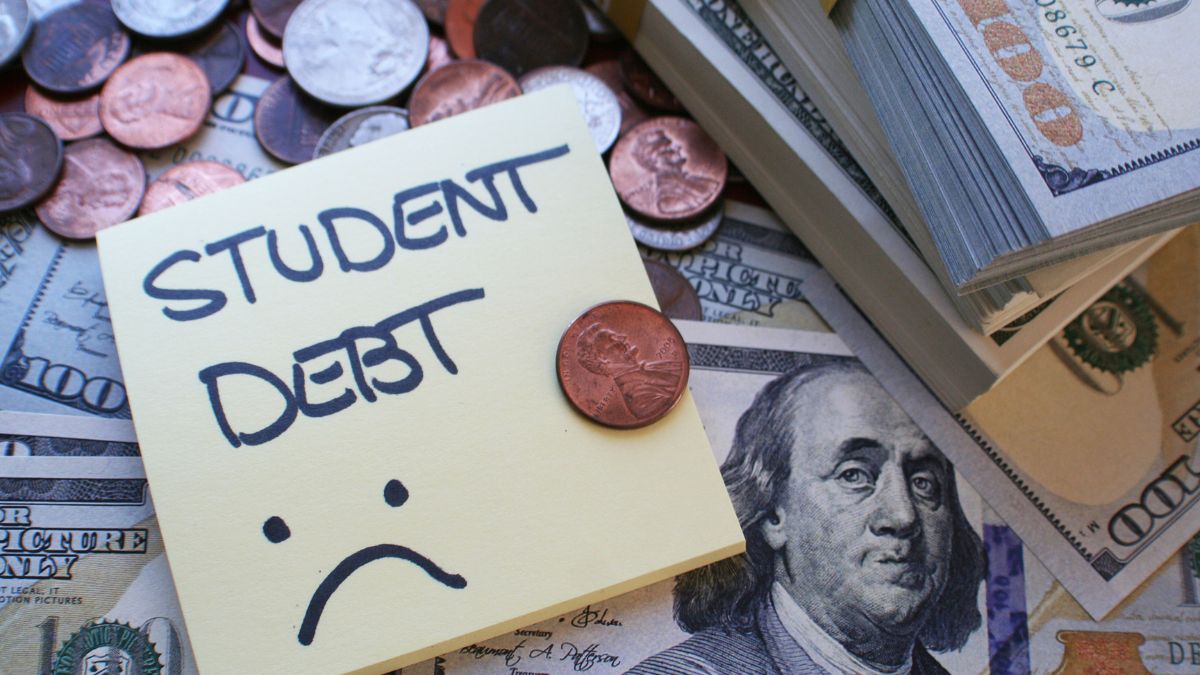Photo Credit: Darren415/Getty Images
This article was originally published on Word In Black.
Mark your calendar for May 5 — or maybe circle it in red.
That’s when the Department of Education will start collection proceedings on the more than five million people who’ve defaulted on their federal student loans. That means financial pain — wage garnishment, seized tax refunds, offset social security checks, and wrecked credit scores — is in the future for people who haven’t made a payment in the past 270 days.
Black folks, who hold a disproportionate amount of student loan debt and are more likely to default — and the Black community as a whole — will pay the highest price.
“The most important thing to know is that this decision is a political choice that prioritizes punishment over solutions,” says Augustus Mays, vice president of Partnerships and Engagement at EdTrust. He points to rising college costs, predatory lending practices, and racism in the labor market as root causes of the student debt crisis.
Yet the Trump administration doesn’t address any of those factors in its decision to play hardball with people who went into debt to get a college education. Instead, student borrowers already struggling to make ends meet are being blamed for their circumstances and penalized accordingly.
The Debt Collective, a union of borrowers fighting for cancellation, agrees.
“Any policy that collects on student debt — rather than pausing collections or canceling the debt outright — will bode poorly for Black borrowers, who disproportionately hold student debt,” says spokesperson Braxton Brewington.
Rooted in the Racial Wealth Gap
A 2024 Pew Charitable Trusts survey of Americans with student loan debt found that 50% of Black borrowers have defaulted on their student loans, while 29% of white borrowers had done so. The high default rate, experts say, is rooted in the racial wealth gap.
“Black borrowers, and Black women in particular, have been stripped of generational wealth,” Brewington says. “Black folks are underpaid in the workplace and then are forced to borrow more to attend college.”
According to the most recent analysis by the Education Data Initiative, Black college graduates carry an average of nearly $53,000 in student loan debt — about $25,000 more on average than their white counterparts — and pay an average of $386 per month. Their white peers pay $349, but data shows white college graduates have seven times the amount of wealth of Black college graduates.
Black women, the most educated demographic in the U.S., are also the most indebted. They leave school with roughly $41,500 in loans for their bachelor’s degree and more than $58,000 for a graduate diploma — all while earning less than their peers in a job market steeped in racism and sexism.
“Systemic inequities in income, employment, and wealth accumulation already place [Black women] at a financial disadvantage,” Mays says, adding that Trump’s strong-arm collection tactics will make matters worse. “Garnishing wages further destabilizes their ability to meet basic needs, build wealth, and achieve economic security.”
Overall, Americans hold $1.77 trillion in federal student loan debt. The Biden administration managed to cancel $183.6 billion of that for 5 million Americans. President Joe Biden also tried to keep a campaign promise to cancel up to $20,000 in student debt per borrower, but the Supreme Court slapped down that plan.
The Trump administration, however, has no interest in letting people walk away from that debt: “There will not be any mass loan forgiveness,” according to a DOE statement.
Biden’s SAVE plan — his second shot at student debt relief — would’ve lowered payments based on income, but an appellate court blocked that one, too, in February. The current push to collect, says Brewington, reinstates “a policy of punishment through a Department of Education that clearly isn’t shut down when it comes to operating as a predatory bank.”
Long-Term Consequences
Folks having less spending money in their pockets will ultimately hurt the economy, Brewington says. Along with undermining economic mobility and intergenerational wealth, the Trump administration’s tactics will also likely discourage future generations of Black students from enrolling in college at all.
“The fear of being trapped in [student] debt with no way out, especially if default can lead to wage garnishment, will likely deter some students,” Mays says. For Black folks already struggling with debt, he said, the financial strain of wage garnishment “can make it harder to return to school to complete their education or pursue graduate degrees.”
Then there’s the stress, anxiety, and psychological strain of owing more in student loans than a year’s salary. “Student debt doesn’t just burden your wallet, it takes a toll on your mental health and stress as well,” Brewington says.
The best thing borrowers can do is get organized. – Braxton Brewington
Given the administration’s gutting of the Consumer Financial Protection Bureau, the dismantling of the Department of Education, and day-to-day tumult of Trump 2.0, Brewington worries the collections “will be chaotic for student loan borrowers.” Along with repayment options “disappearing and reappearing,” he points out that there’s no one holding loan servicers accountable.
But both Brewington and Mays agree that the answer is to challenge what’s happening.
“The best thing borrowers can do is get organized,” Brewington says. The Debt Collective encourages borrowers to organize and demand mass cancellation, better regulation of loan servicers, and a long-overdue restructuring of the system itself.
Mays at EdTrust calls on borrowers to contact their elected officials at the state and federal level, “and demand an immediate halt to these collections and real action on student debt relief, including targeted relief for Black borrowers.”
